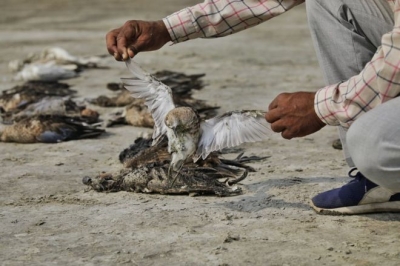
Memories of 2019 Sambhar tragedy came back to haunt Rajasthan as scores of birds were found dead on the lake. They included different species of birds such as rufous tree pie, owl, crow and gull. Earlier, a week before the bird deaths were reported from Sambhar, 189 demoiselle cranes had died at Jodhpurs Kaparda pond.
Bhopal-based National Institute of High-Security Animal Disease (NIHSAD) confirmed the cause of the bird deaths to be avian influenza (bird flu). The lab has detected two strains of influenza virus – H5N8 and H5N1-in the dead birds.
The H5N1 strain of bird flu can spread from birds to humans through contact. Symptoms of H5N1 include cough, fever, sore throat muscular pain, headache and difficulty breathing. The HSN1 strain can also result in human deaths.
Migratory birds were under observation in Jodhpur and other areas following these bird deaths Security was beefed up in the Desert National Park as well, which is home to the critically endangered Great Indian Bustard.
What happened in 2019?
In a similar incident in 2019, over 30,000 migratory birds died in Rajasthan, especially in the locality of Sambhar Lake. But the cause was found to be avian botulism. Avian botulism is a serious neuromuscular illness caused by a toxin produced by the bacterium clostridium botulinum. The outbreak at Sambhar was caused by various factors such as a good monsoon which created a favourable environment for the bacteria to thrive.
What is bird flu?
Bird flu is a highly infectious, respiratory disease in birds caused by the H5N1 influenza virus, which can occasionally infect humans and other animals that come into contact with a carrier. Bird flu usually affects poultry such as chicken and ducks. The other strain H5N8 is highly lethal among birds, but it has not been found to affect humans.
How does it spread?
Bird flu spreads when birds come into contact with nasal secretions and faeces of infected birds. It can spread to humans in a similar fashion.
Symptoms in birds
Lack of energy and appetite: swelling of the head, eyelids, combs; discolouration of legs: nasal discharge, coughing, sneezing and diarrhoea are symptoms observed in birds affected by avian flu. It is often fatal.
Symptoms in humans
If humans are affected by bird flu, they may show symptoms such as diarrhoea, high fever, chest pain, muscle pain, cough and headache.
Picture Credit : Google




